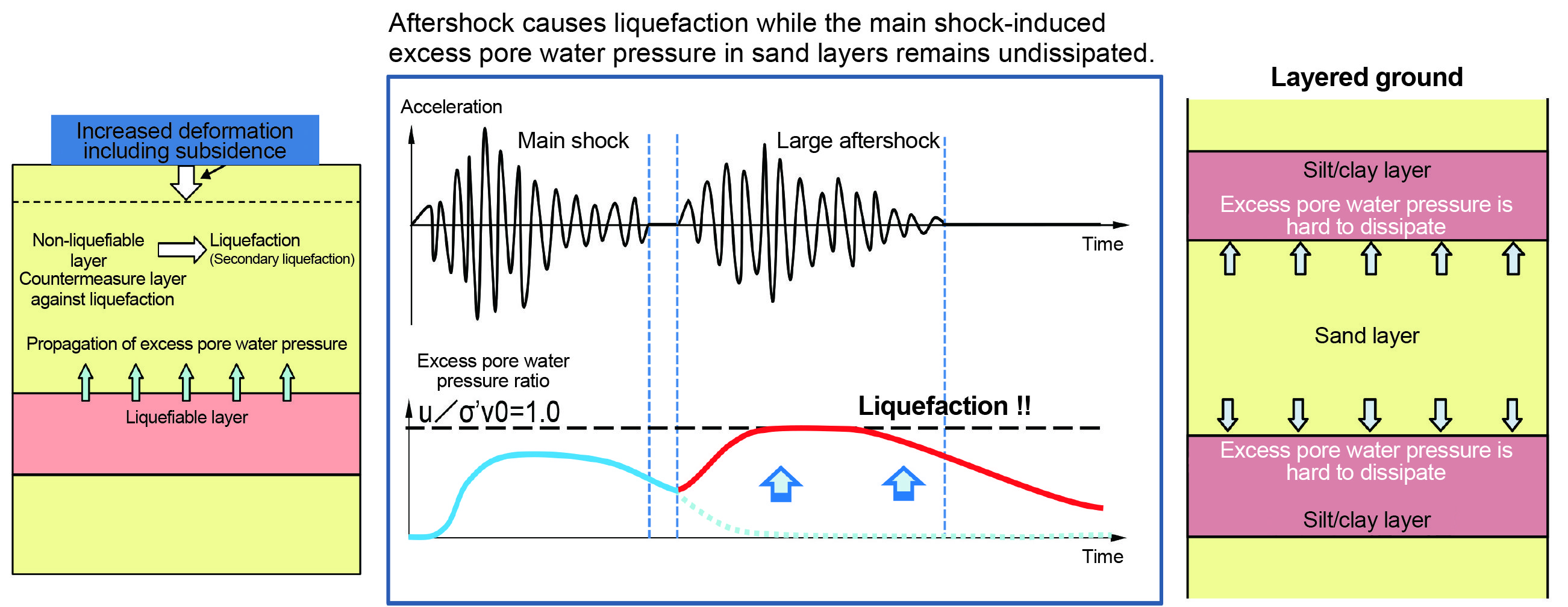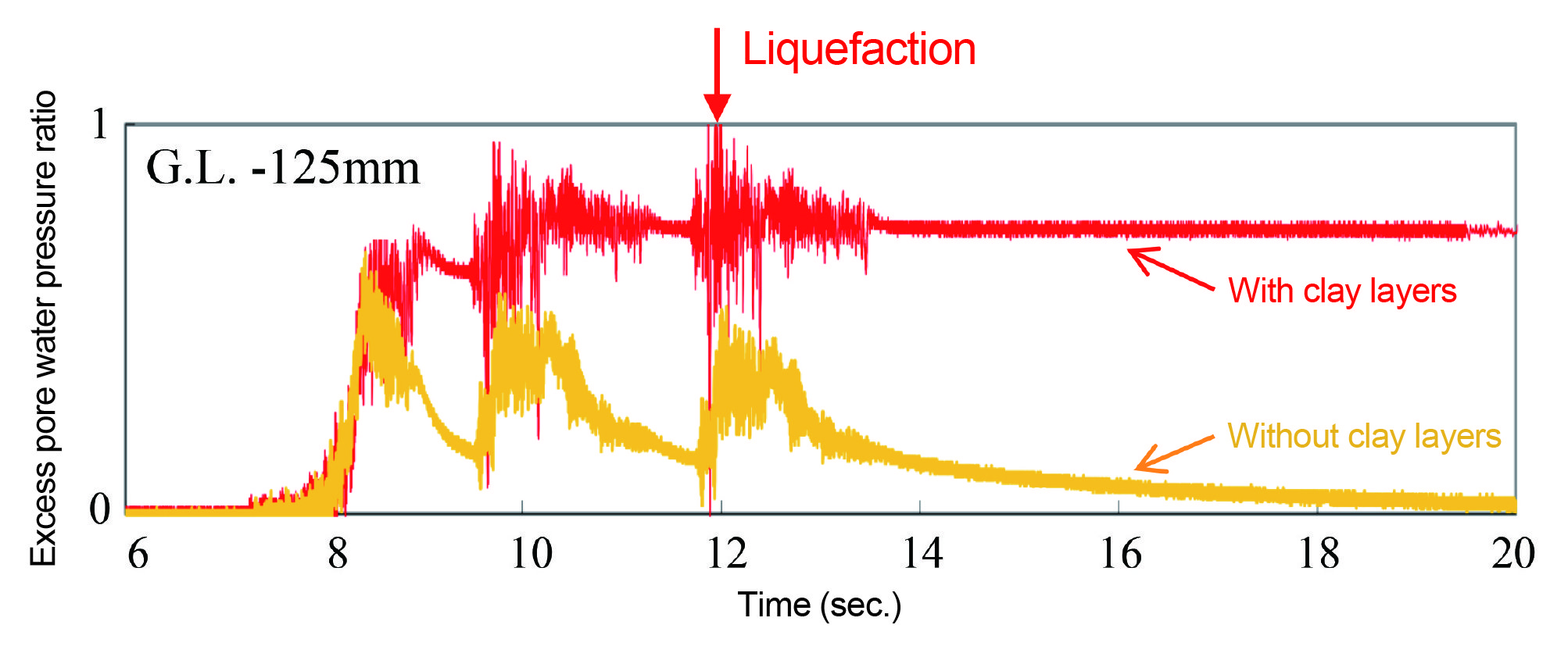Major Research Study on the mechanism, evaluation and prediction of liquefaction under combined earthquake motions
In the Great East Japan Earthquake, after a magnitude-9 main shock, 132 aftershocks of magnitude 5 or greater occurred on the day of the main shock. Especially, within 30 minutes after the main shock, there were three violent aftershocks of magnitude 7 or greater. In the Kumamoto Earthquake, the importance of continuous earthquakes including foreshocks and main shocks became obvious. Many cases of aftershockinduced liquefaction after the main shock were confirmed; coastal zones in Japan have many layers, with non-liquefiable layers sandwiching liquefiable layers. However, since prediction techniques to evaluate such liquefaction had not been established, it was necessary to investigate such techniques.
In this research, we systematically clarified the characteristics and mechanisms of liquefaction under such combined earthquake motions, and verified mechanisms and countermeasures of liquefaction in layered ground in which liquefiable layers are sandwiched by non-liquefiable layers. In addition, we developed and proposed a new liquefaction prediction and assessment method which can be utilized universally around the world.
This new liquefaction prediction and assessment method is a practical method which simultaneously predicts and accounts for the effects of irregularities of the waveforms and durations of earthquake motions, which had been difficult. Also, the method was generalized so that it can be used for various types of liquefaction charts which adopt ground N-values, cone-penetration resistances, and shear-wave velocities from surface-wave exploration.
Following the recent occurrence of large-scale, long-duration earthquake motions including the Great East Japan Earthquake and Kumamoto Earthquake, the social demands and importance of more appropriate and rational liquefaction prediction and assessment have been increasing, not only in Japan but also internationally. Accordingly, the newly developed liquefaction prediction/assessment method is expected to be used worldwide to mitigate earthquake-induced liquefaction disasters.

Conceptual illustration to systematically clarify the liquefaction mechanism under combined earthquake motions

Liquefaction characteristics of layered ground due to combined earthquake motions



